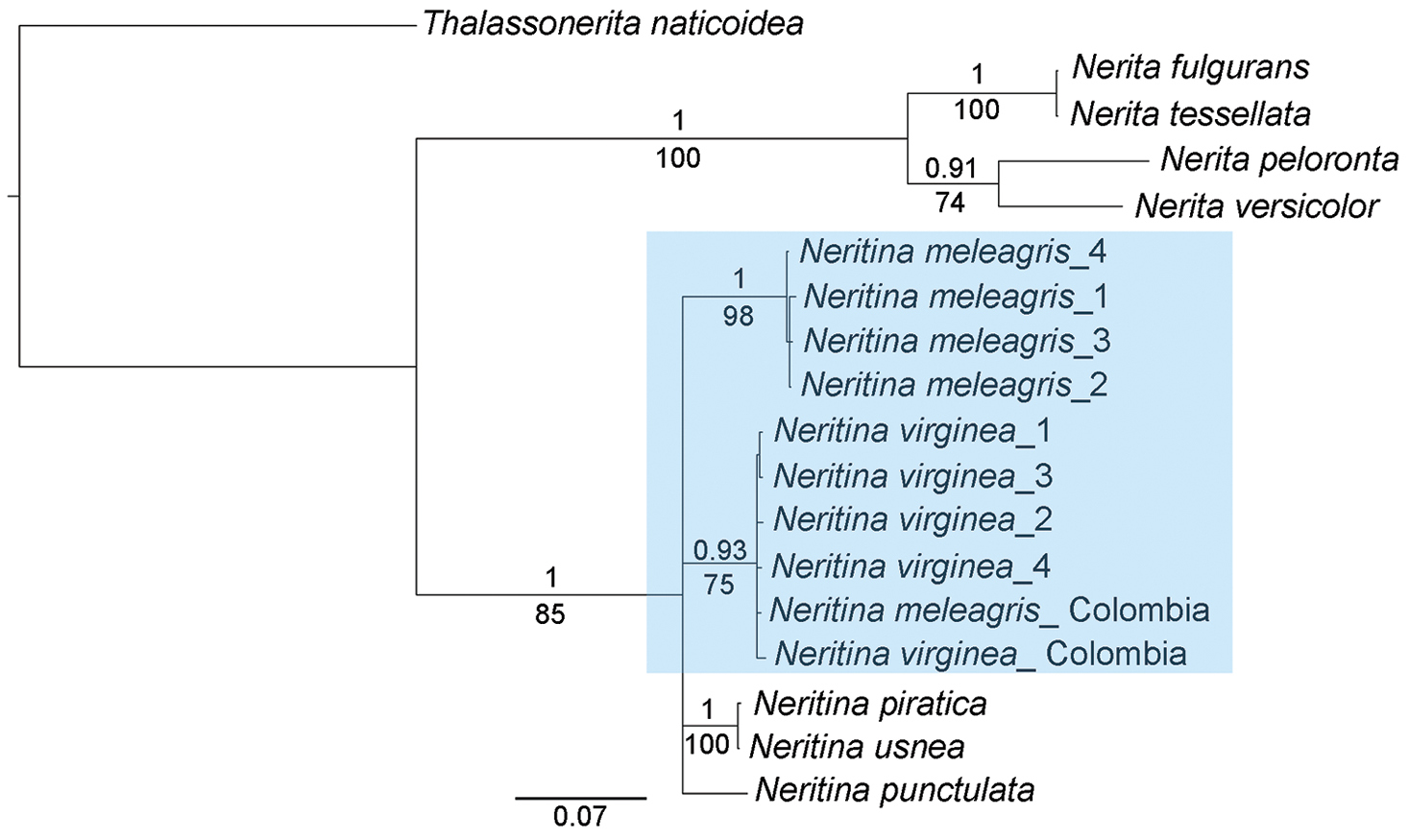
|
||
|
Molecular phylogenetic hypothesis (Bayesian tree) of some species of Neritidae of the Western Atlantic. The Bayesian tree was based on partial mitochondrial COI and 16S sequences. The Neritina meleagris and Neritina virginea clades (ingroup) are highlighted. The other taxa were used as outgroup. Numbers on and below the main branches represent the posterior Bayesian probabilities (BP) (>0.90) and bootstrap values for maximum likelihood (ML) (>70%), respectively. Specimens with the number “1” are from Camocim beach (Ceará State, NE Brazil) and those with numbers “2”, “3”, and “4” are from Barra Grande beach (Piauí State, NE Brazil). The numbered specimens of N. virginea (1, 2, 3, and 4) and N. meleagris (1, 2, 3, and 4) are the same specimens shown in Figure 3. |